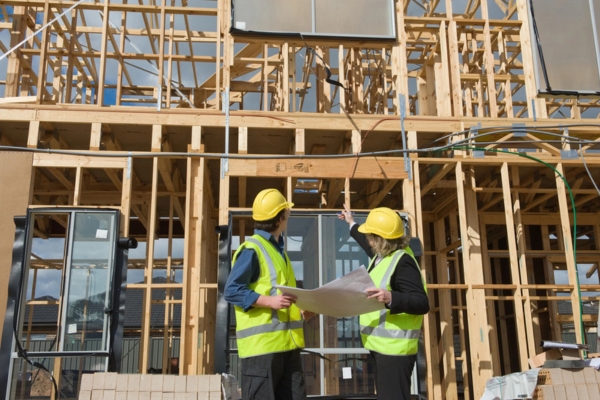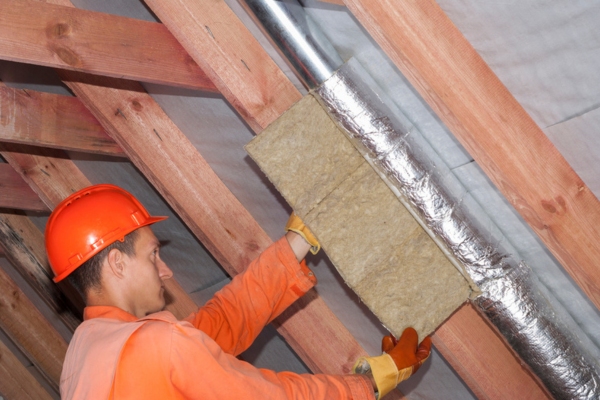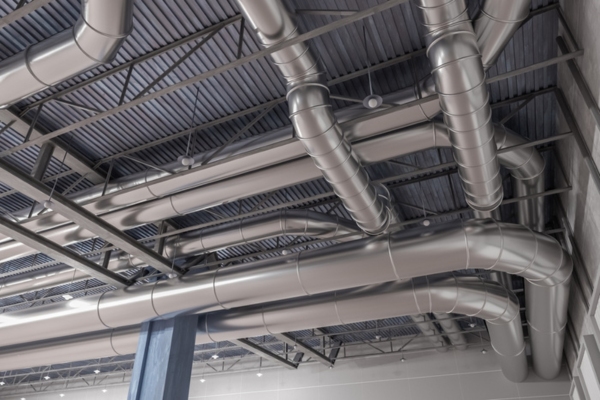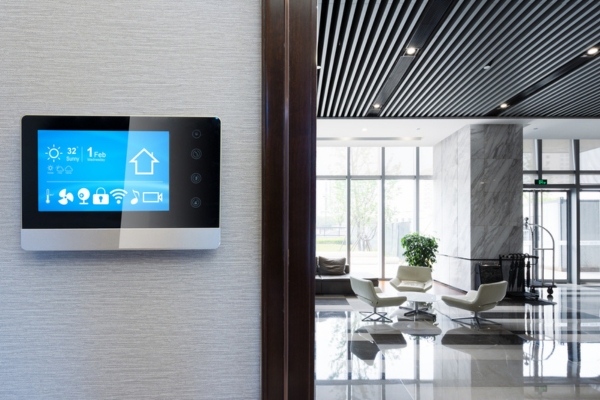Table of Contents
- Cool Confluence: Cooling Technology’s Effect on Architectural Design
- Advancements in Air Conditioning Technology
- The Impact of Air Conditioning on Architectural Configuration
- The Influence of Cooling Systems on Construction Materials and Methods
- Choice of Building Materials & Design Principles
- Incorporating Cooling Systems within Architectural Design
- Sustainability and Energy Efficiency
- Future Trends & Innovations of Architecture & Cooling
- Conclusion
- Contact Lake Region Energy for Comprehensive HVAC Services
The introduction of air conditioning technology has markedly transformed the landscape of architectural design and construction techniques. It allows structures to better accommodate various climatic conditions while improving the comfort levels of those inside. This article delves into the effects of cooling technology on the architectural field, scrutinizing its influence on the evolution of building designs, choice of materials, and configuration of spaces.
In this article by Lake Region Energy, we explore how advancements in air conditioning have intertwined with architectural progress. We also uncover the evolution of contemporary, eco-friendly, and comfortable living and working spaces.
Cool Confluence: Cooling Technology’s Effect on Architectural Design
The interplay between cooling technology and architectural design has profoundly transformed the spaces we inhabit.
Advancements in Air Conditioning Technology

Tracing the development of air conditioning from its primitive beginnings to the contemporary sophistication of HVAC systems reveals a significant trajectory of inventive progress and adaptability. Initial innovations, including the creation of mechanical cooling, catalyzed a transformative era in architectural potential, allowing structures to transcend environmental constraints and enhance the comfort of their inhabitants.
Pivotal advancements, such as introducing energy-saving and eco-friendly cooling mediums, have steered architectural design towards a more sustainable and inventive path. This evolution underscores the essential influence of air conditioning technology in propelling architectural creativity and determining the methods we employ to design, build, and interact with our surroundings.
Secure indoor comfort seamlessly with Lake Region Energy’s reliable air conditioning solutions. Contact us for customized support now.
The Impact of Air Conditioning on Architectural Configuration

The introduction of air conditioning technology has significantly impacted how buildings are designed and structured, prompting a move to enclosed, climate-regulated spaces that emphasize comfort and practicality. Such technological adoption has led to alterations in the aesthetics of buildings, their directional placement, window configurations, and space organization, thereby enhancing design versatility and promoting energy conservation.
Architects are now meticulously planning the orientation of buildings and the positioning of windows to maximize natural lighting and reduce heat absorption, all while factoring in the spatial requirements of air conditioning units. This development highlights the deep-seated influence that cooling technology has had on creating contemporary, eco-friendly architectural spaces.
The Influence of Cooling Systems on Construction Materials and Methods
The advancement of air conditioning technology has fundamentally altered architectural design principles. It also markedly affected the choice of materials and techniques used in construction. Driven by the demand for efficient cooling, there has been a shift towards materials that improve insulation and diminish thermal transfer. The use of cutting-edge insulating substances, including high-efficiency foam and aerogel insulators, has grown in popularity.
These innovations assist in sustaining optimal indoor climates while keeping energy usage to a minimum. Furthermore, embracing green building norms and certifications fosters selecting construction materials and methodologies that lessen environmental harm. This approach encompasses the employment of sustainably harvested materials, the adoption of construction practices that minimize waste, and the incorporation of renewable energy solutions.
Choice of Building Materials & Design Principles

The thoughtful selection of building materials and adherence to specific design principles are pivotal in boosting building efficiency and comfort for occupants:
- Thermal Mass Consideration: Buildings increasingly utilize materials with high thermal mass, like stone and concrete, to moderate indoor temperatures. During the day, these materials absorb and store heat, releasing it at night to cool the building naturally. This helps in reducing the dependence on air conditioning.
- Thermal Mass Utilization: The strategic use of high thermal mass materials, like concrete and stone, is on the rise in buildings to stabilize indoor climates. By absorbing heat during the day and releasing it at night, these materials facilitate natural cooling, thereby diminishing the reliance on air conditioning systems.
- Insulation Significance: Insulation is now a fundamental aspect of building energy-efficient structures. It is critical in lessening cooling demands and markedly improving indoor comfort through stable temperature maintenance and noise reduction.
- Efficiency in Design: The design and positioning of buildings are carefully considered to maximize natural airflow and sunlight. Thereby reducing the reliance on mechanical cooling and artificial lighting. This approach involves carefully placing windows, applying reflective materials to decrease heat uptake, and integrating shading mechanisms to manage solar exposure.
You can rely on Lake Region Energy for your home cooling needs. Contact us for prompt and professional service.
Incorporating Cooling Systems within Architectural Design

The flawless incorporation of cooling technologies into architectural layouts is vital in contemporary construction efforts, guaranteeing maximum efficiency while maintaining design integrity and space functionality.
- Design Considerations: Elements such as HVAC ductwork, vents, and grilles have evolved beyond their functional roles to become key components of architectural aesthetics. Their incorporation demands meticulous coordination to guarantee they enhance the space’s design narrative, merging effortlessly with interior and exterior visuals.
- HVAC System Positioning: Thoughtful design and placement of HVAC units are imperative for effective airflow and accurate temperature management. This process includes assessing the orientation of the building, the layout of rooms, and how spaces are used to identify optimal positions for vents and ducts. Such strategic positioning boosts the air conditioning system’s efficiency and elevates comfort by promoting even temperature and air quality distribution across the structure.
The deliberate integration of cooling technologies into architectural planning embodies a comprehensive construction strategy, where practicality, effectiveness, and aesthetic appeal are seamlessly integrated.
Sustainability and Energy Efficiency

Architectural design and cooling technologies have notably shifted towards greener building practices, emphasizing energy efficiency and sustainability. Recent air conditioning advancements, like energy-efficient systems and intelligent management, are pivotal. They enhance comfort and cut energy consumption and emissions.
Adopting renewable energy in cooling systems underlines a commitment to environmental stewardship, marking a significant leap in sustainable development. Air conditioning is vital in combating the urban heat island phenomenon and reducing carbon footprints via eco-friendly building approaches. Strategies such as green roofs, enhanced natural airflow, and better insulation significantly decrease dependence on artificial cooling. They help promote energy savings and environmental preservation.
This movement towards integrating sustainability into cooling technology and architectural design elevates energy efficiency. They also establish a new benchmark for crafting eco-friendly and comfortable living areas.
Future Trends & Innovations of Architecture & Cooling

Emerging trends in cooling technology, including passive cooling systems and smart HVAC controls, are set to impact architectural design and urban planning significantly. Passive cooling, utilizing natural processes to reduce temperatures, encourages designs that harmonize with the environment, reducing reliance on energy-intensive systems. Smart controls promise enhanced efficiency and comfort through real-time adjustments to environmental conditions.
The horizon of architecture and cooling technologies is being reshaped by cutting-edge trends such as passive cooling strategies and intelligent HVAC controls. Passive cooling leverages the natural environment to lower indoor temperatures, promoting designs in sync with nature and minimizing the need for energy-heavy systems. Meanwhile, smart control systems promise heightened efficiency and comfort by making dynamic adjustments based on current environmental conditions.
The partnership among architects, engineers, and HVAC experts is essential for embedding these innovations, guaranteeing that buildings are visually appealing and functionally advanced. Additionally, green building certifications drive the industry toward greater energy efficiency and sustainability, signaling a future where architecture and cooling technology progress together to reduce environmental impacts and enhance urban environments for coming generations.
Keep your home cool and comfortable. Contact Lake Region Energy for quick and efficient air conditioning repairs and installations today!
Conclusion
Cooling technology has profoundly impacted architectural design and construction practices. This paves the way for innovations that lead to more comfortable and sustainable living spaces. The intimate connection between air conditioning and architectural practices underscores the significance of integrating energy-efficient cooling solutions into contemporary design strategies.
As the industry advances, Lake Region Energy provides specialized HVAC services designed to meet the complex demands of modern architecture, guaranteeing that projects adhere to environmental sustainability standards and achieve supreme comfort levels.
Contact Lake Region Energy for Comprehensive HVAC Services
Lake Region Energy provides top-notch heating and cooling solutions in Maine and New Hampshire, with a team of professionally certified and skilled technicians committed to HVAC excellence in maintenance, repair, installation, and replacement. We offer efficient, effective service at competitive rates.
Our maintenance can enhance comfort, improve energy efficiency, and lower costs. For repairs or replacements, we recommend options that fit your budget, backed by our satisfaction guarantee. Contact Lake Region Energy to schedule a complimentary in-home evaluation.
For more information about our fuel deliveries and HVAC services, be sure to contact Lake Region Energy. You can click here to contact us, or you can call us at (207) 839-5500 to find out more. We offer a full line of heating and cooling repairs, maintenance services, and installations. Click the link to view our service area.

Related Articles:
- Unlocking the Mysteries of Air Conditioning: Unveiling Fascinating Insights
- Understanding Air Conditioner Condenser Rust: Essential Insights & Tips
- Beat the Heat: Typical Air Conditioner Problems to Watch Out for This Summer
- Signs Your Air Conditioner Needs A Replacement
- Air Conditioner Noises To Be Aware Of
